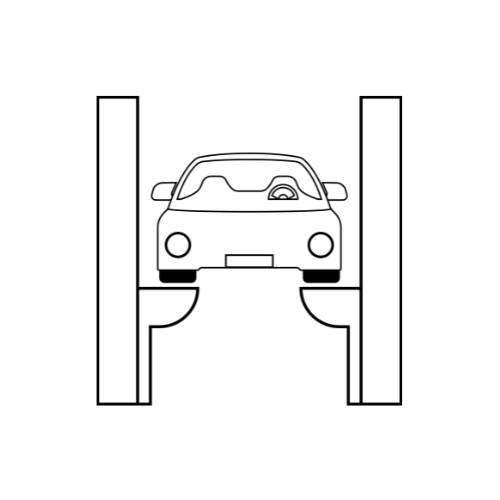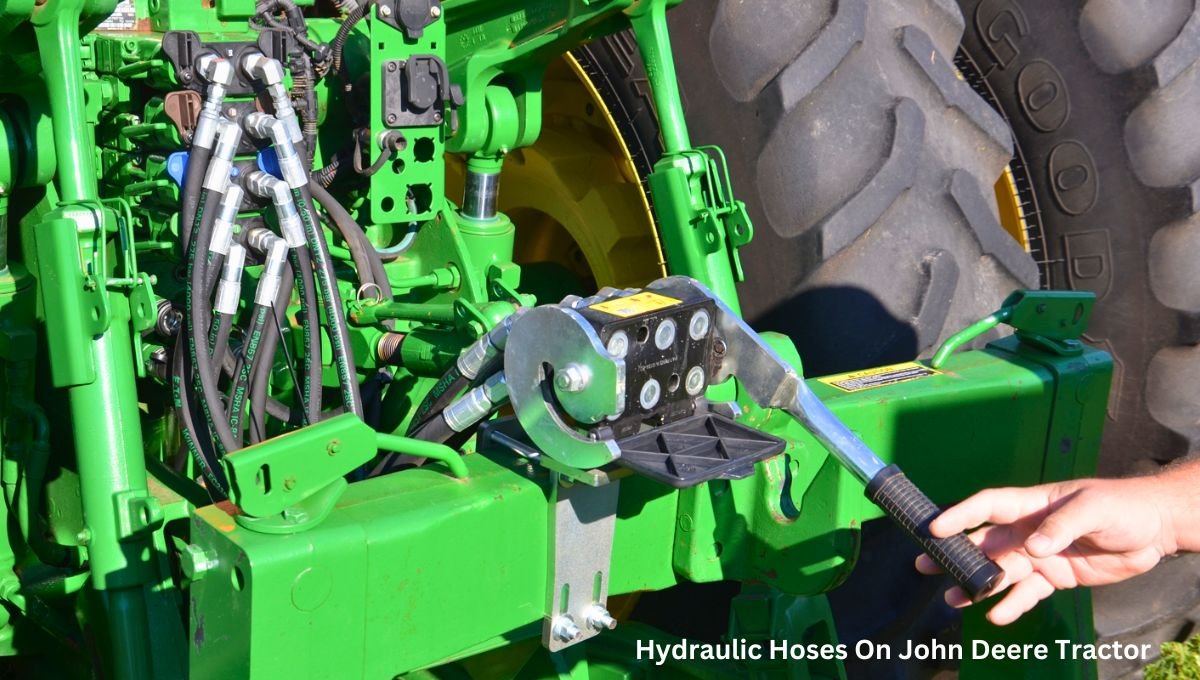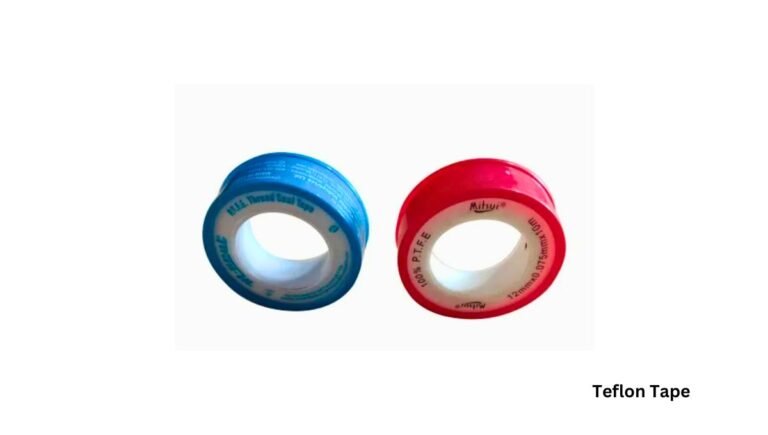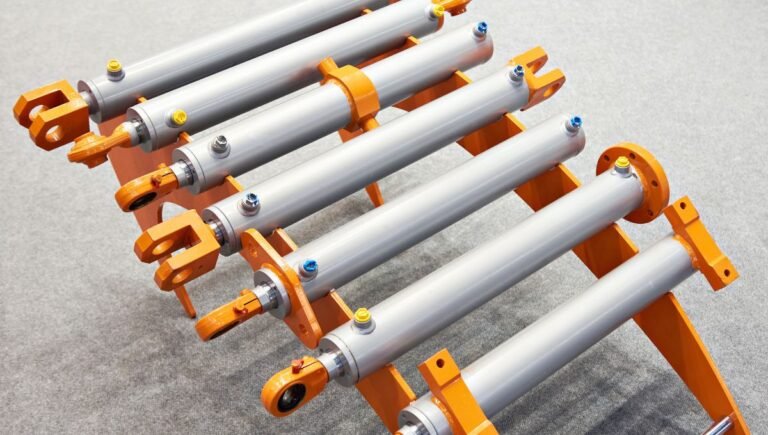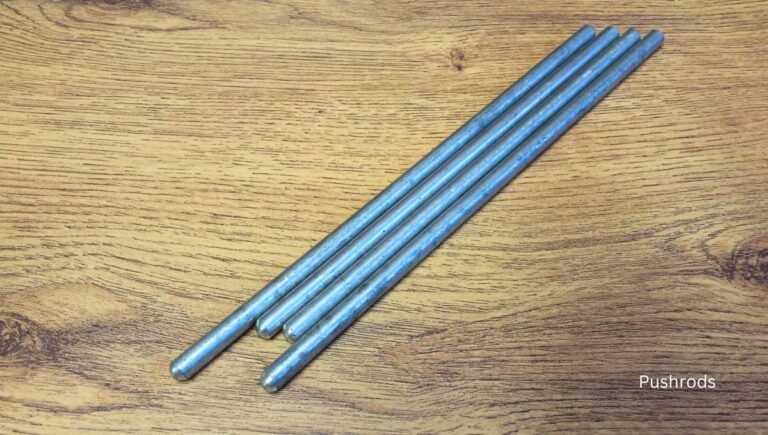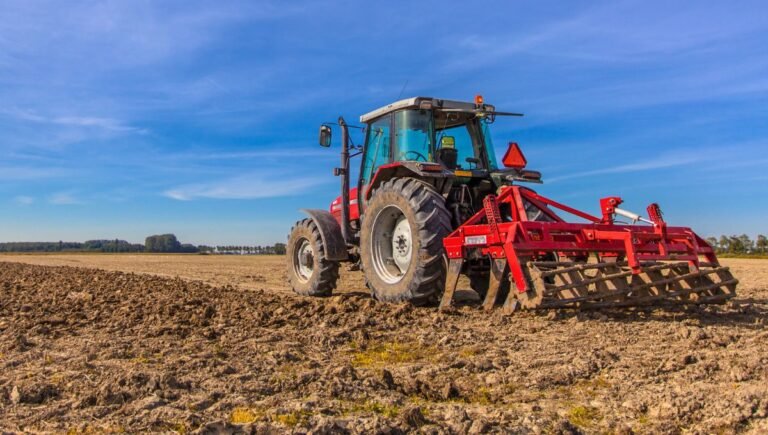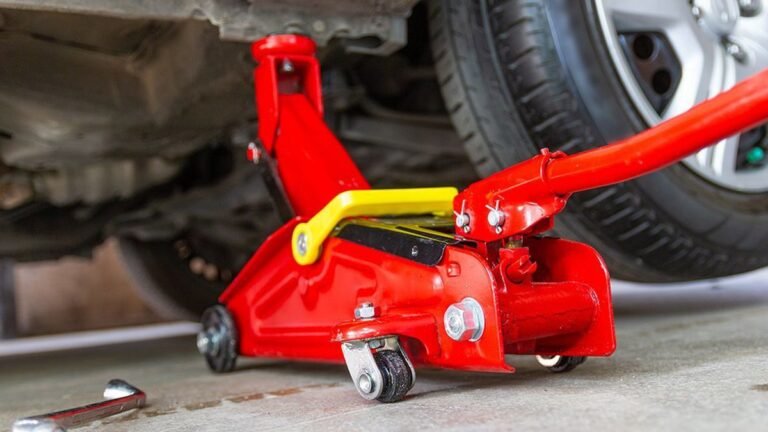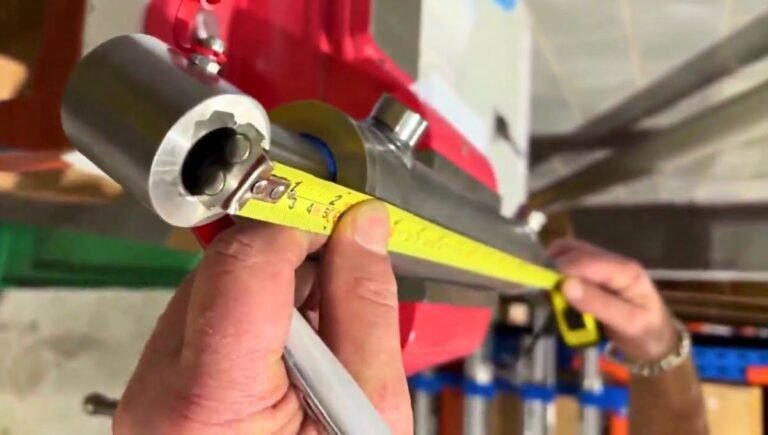How to Disconnect Hydraulic Hose from John Deere Tractor?
To disconnect a hydraulic hose from a John Deere tractor, relieve the pressure and then use a wrench to unscrew the fittings. John Deere tractors rely heavily on hydraulic systems for various functions.
Proper maintenance and handling of hydraulic hoses are crucial for the machine’s efficiency and longevity. Disconnecting a hydraulic hose may seem daunting, but it is a straightforward process if done correctly. Always start by relieving the hydraulic pressure to avoid any hazards.
Use appropriate tools like a wrench to unscrew the fittings securely. Understanding the steps ensures safety and efficiency, helping you maintain your tractor in top condition. Always consult your tractor’s manual for specific instructions tailored to your model. Regular checks and maintenance can prevent future complications.
Introduction To Hydraulic Systems On John Deere Tractors
John Deere tractors are known for their reliable hydraulic systems. These systems power various components, improving the tractor’s efficiency and versatility. Understanding these hydraulic systems is crucial for proper maintenance.
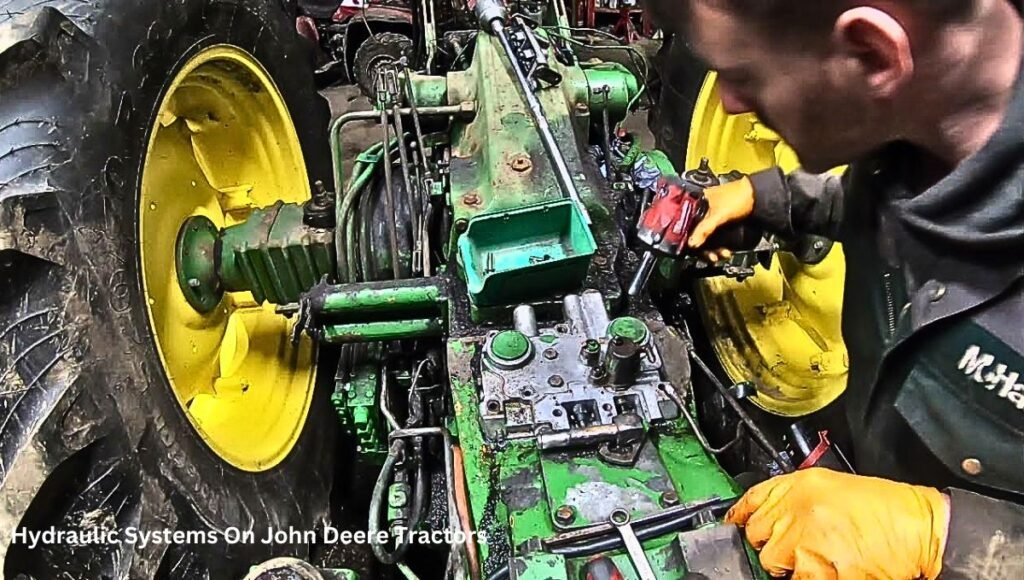
Importance Of Hydraulic Systems
Hydraulic systems are essential for John Deere tractors. They provide power to components such as loaders, backhoes, and other attachments. These systems help in lifting, digging, and other heavy tasks. Efficient hydraulic systems ensure smooth operation and increased productivity.
| Component | Function |
|---|---|
| Hydraulic Pump | Generates hydraulic power |
| Hydraulic Cylinders | Convert hydraulic power to mechanical power |
| Hydraulic Hoses | Transport hydraulic fluid |
Safety Precautions Before Starting
Always prioritize safety when working on hydraulic systems. Follow these simple steps to stay safe:
- Turn off the tractor and remove the key.
- Release hydraulic pressure by moving the control levers.
- Wear protective gear, such as gloves and safety glasses.
- Check the hydraulic fluid level and look for leaks.
Understanding these safety precautions can prevent accidents and injuries. Always follow these steps before starting any work on hydraulic systems.
Identifying The Hydraulic Hose Components
To disconnect a hydraulic hose from a John Deere tractor, you must first identify the components. This task requires recognizing different types of hoses and locating their connection points. Proper identification ensures you work safely and efficiently.
Types Of Hydraulic Hoses
Hydraulic hoses come in various types. Each type serves a specific purpose. Here are the most common ones:
- High-Pressure Hoses: These hoses handle extreme pressure.
- Medium-Pressure Hoses: Suitable for moderate pressure levels.
- Low-Pressure Hoses: Used in low-pressure systems.
- Return Hoses: These carry fluid back to the reservoir.
Knowing these types helps in identifying the correct hose to disconnect.
Locating Connection Points
Finding the connection points is crucial. Follow these steps to locate them:
- Inspect the hydraulic system diagram.
- Look for the hose ends connecting to the hydraulic system.
- Check the fittings for any signs of leakage or wear.
- Identify quick-connect couplers, if present.
Here’s a simple table to help you recognize common connection points:
| Connection Point | Description |
|---|---|
| Hydraulic Pump | Where fluid gets pressurized |
| Hydraulic Cylinder | Converts fluid power into mechanical force |
| Hydraulic Motor | Converts fluid power into rotational force |
| Reservoir | Stores hydraulic fluid |
Ensure all tools are ready to disconnect the hydraulic hose from a John Deere tractor.
Tools Required For The Job
To disconnect a hydraulic hose from a John Deere tractor requires specific tools. Using the correct tools ensures safety and efficiency. Below are the essential tools you’ll need.
Standard Toolset
- Wrenches: Use adjustable or combination wrenches.
- Screwdrivers: Both flathead and Phillips screwdrivers are necessary.
- Socket Set: Essential for loosening and tightening bolts.
- Pliers: Regular and needle-nose pliers are useful.
- Safety Gear: Wear gloves and safety glasses.
Specialized Hydraulic Tools
- Hydraulic Hose Wrench: This wrench fits the hose fittings perfectly.
- Hydraulic Hose Puller: Useful for pulling out tight hoses.
- Hydraulic Pressure Gauge: Measures pressure in the system.
- Hydraulic Hose Crimper: For reattaching hoses securely.
- Hydraulic Fluid Catch Pan: Prevents spills when detaching hoses.
Having these tools ready helps you disconnect the hose safely and quickly. Ensure all tools are in good condition before starting the job.
Preparing The Tractor For Hose Disconnection
Disconnecting a hydraulic hose from a John Deere tractor requires careful preparation. Ensuring the tractor is stable and safe is crucial. Follow these steps to prepare your tractor for a smooth hose disconnection.

Engaging The Parking Brake
The first step is to engage the parking brake. This ensures the tractor stays in place. Locate the parking brake lever or pedal. Apply firm pressure to set the brake. Double-check the brake is engaged before moving on.
Lowering Implements To The Ground
Lowering all implements to the ground is essential for safety. This prevents any accidental movements. Use the hydraulic controls to lower each implement. Make sure every implement is fully resting on the ground.
Here is a quick checklist to ensure your tractor is ready:
- Engage the parking brake.
- Lower all implements to the ground.
- Ensure the engine is off.
- Release any hydraulic pressure.
Following these steps will make the disconnection process safe and efficient.
Draining The Hydraulic System
Disconnecting a hydraulic hose from a John Deere tractor requires careful steps. One crucial step is draining the hydraulic system. Draining ensures that no hydraulic fluid spills. It also keeps the system clean and safe.
Relieving System Pressure
First, you must relieve the system pressure. This step is vital to prevent accidents. Follow these simple steps:
- Turn off the tractor and remove the key.
- Locate the hydraulic pressure release valve.
- Slowly open the valve to release any built-up pressure.
Always wear protective gloves and goggles. This protects you from fluid spray.
Collecting Hydraulic Fluid
Next, you need to collect the hydraulic fluid. Gather the necessary tools:
| Tool | Purpose |
|---|---|
| Drain Pan | To catch the hydraulic fluid |
| Wrenches | To loosen the hose fittings |
Place the drain pan under the hose connection. Use a wrench to loosen the fitting. Allow the fluid to drain completely into the pan.
Dispose of the hydraulic fluid properly. Check local regulations for disposal methods.
The Disconnection Process
The process to disconnect a hydraulic hose from a John Deere tractor can be simple. Follow these steps to ensure safety and efficiency. Proper technique prevents damage and ensures your tractor functions well.
Steps To Release The Hose Coupler
- Turn off the engine: Safety first. Ensure the tractor is off.
- Relieve the pressure: Move the hydraulic control lever back and forth.
- Locate the hose coupler: Find the specific hose you need to disconnect.
- Clean the area: Wipe any dirt around the coupler to avoid contamination.
- Release the coupler: Pull back the locking collar on the coupler.
- Disconnect the hose: Gently pull the hose away from the coupler.
Handling Stubborn Connections
- Use a wrench: If the hose is stuck, gently use a wrench.
- Apply lubricant: Spray a small amount of lubricant on the coupler.
- Heat the area: Use a heat gun to warm the coupler, making it expand.
- Check for damage: Inspect the hose and coupler for any signs of wear.
- Consult the manual: Refer to the John Deere manual for specific guidance.
By following these steps, you can easily disconnect the hydraulic hose. This ensures your John Deere tractor stays in great shape.
Inspection And Maintenance Post-disconnection
Once you’ve disconnected the hydraulic hose from your John Deere tractor, it’s crucial to perform thorough <strong>inspection and maintenance. This ensures the longevity and efficiency of your equipment. Below are detailed steps to guide you through this process.
Checking For Wear And Damage
Inspect the hydraulic hose carefully. Look for signs of wear and damage. Check for cracks, abrasions, or any bulging areas. These issues can compromise the hose’s integrity. If you find any damage, replace the hose immediately.
Also, examine the couplers. Ensure they are not bent or corroded. A damaged coupler can lead to leaks or poor hydraulic performance.
Cleaning The Hose And Couplers
Cleaning the hydraulic hose and couplers is essential for optimal performance. Start by wiping down the hose with a clean, dry cloth. This removes any dirt or debris.
Next, clean the couplers using a suitable cleaning solution. Make sure to remove all grime and residue. This prevents contamination of the hydraulic system when you reconnect the hose.
Dry the components thoroughly before reassembling them. Moisture can cause rust or other issues.
| Inspection Steps | Action Required |
|---|---|
| Check for cracks | Replace hose if cracked |
| Look for abrasions | Replace hose if abraded |
| Inspect couplers | Replace if damaged |
- Use a clean, dry cloth for initial wipe-down
- Apply a suitable cleaning solution for deep cleaning
- Ensure all parts are dry before reassembly
Reconnecting The Hydraulic Hose
Reconnecting the hydraulic hose to your John Deere tractor is essential. This process ensures the tractor operates smoothly. Follow the steps carefully to avoid any issues.
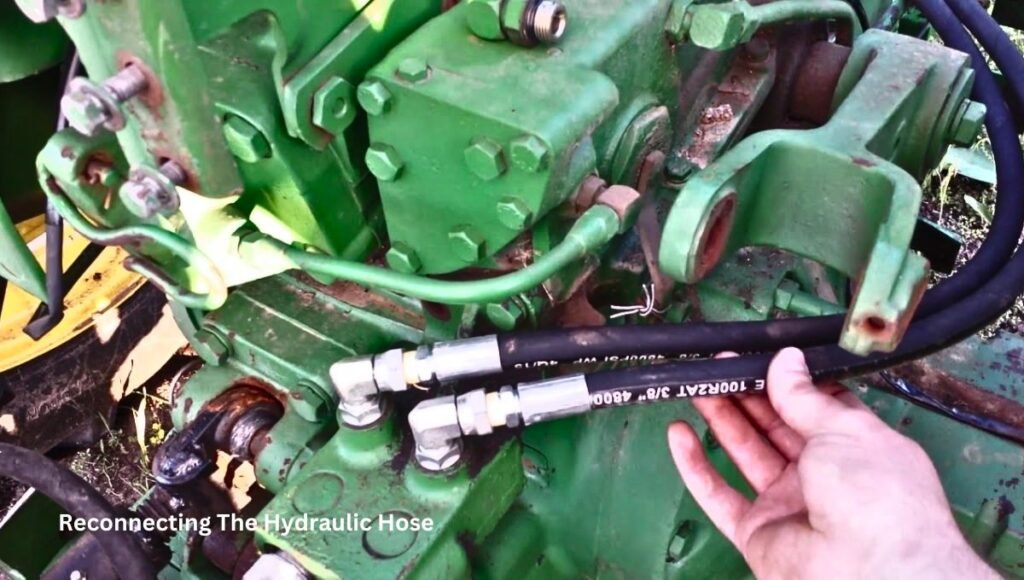
Steps For A Secure Reconnection
- Inspect the Hose: Check for any damage or wear.
- Clean the Connections: Remove any dirt or debris.
- Align the Hose: Ensure the hose is properly aligned with the fitting.
- Secure the Connection: Tighten the hose using a wrench.
- Check for Tightness: Ensure the hose is firmly connected.
Testing The Connection For Leaks
After reconnecting, it’s important to test for leaks. This ensures the connection is secure.
- Start the Tractor: Turn on the engine.
- Activate the Hydraulics: Engage the hydraulic system.
- Observe the Connection: Look for any signs of leaks.
- Tighten if Necessary: If you see leaks, tighten the connection more.
Troubleshooting Common Issues
Disconnecting a hydraulic hose from a John Deere tractor can sometimes present challenges. Identifying and addressing common issues ensures a smooth process. Below are practical solutions to typical problems you might encounter.
Dealing With Hydraulic Fluid Leaks
Hydraulic fluid leaks can disrupt your work. Inspect the connection points for damage. Replace any damaged seals immediately. Always use the correct type of hydraulic fluid specified in your tractor’s manual.
Follow these steps to manage leaks effectively:
- Turn off the tractor and release hydraulic pressure.
- Clean the area around the leak with a dry cloth.
- Check the hose for visible cracks or wear.
- Replace the hose if necessary.
Regular maintenance prevents many leaks. Always check hoses before starting the tractor.
Addressing Connection Failures
Connection failures often stem from improper fittings. Ensure fittings are clean and free from debris. Always double-check connections before operating the tractor.
If a connection failure occurs, try the following:
- Turn off the tractor and depressurize the hydraulic system.
- Inspect the fitting for damage or dirt.
- Clean the fitting with a soft brush and dry cloth.
- Reconnect the hose securely, ensuring a tight fit.
Maintaining clean and secure connections is crucial. This helps prevent future issues and ensures efficient operation.
Final Steps And Safety Checks
After disconnecting the hydraulic hose from your John Deere tractor, it’s essential to complete the final steps and safety checks. These actions ensure the tractor operates smoothly and safely. This section will guide you through proper disposal of used hydraulic fluid and conducting a functional test of the tractor.
Proper Disposal Of Used Hydraulic Fluid
First, collect the used hydraulic fluid in a clean container. Ensure no spillage occurs. Spilled fluid can be harmful to the environment and slippery. Place the container in a safe location away from children and pets.
Next, take the collected fluid to a recycling facility. Most auto parts stores accept used hydraulic fluid. Do not dispose of it in the trash or down the drain. Used hydraulic fluid can contaminate water supplies and harm wildlife.
Here is a quick summary:
- Collect fluid in a clean container.
- Prevent spillage.
- Store safely away from children and pets.
- Recycle at an auto parts store or facility.
- Never trash or pour down the drain.
Conducting A Functional Test Of The Tractor
After disposing of the fluid, it’s time to test the tractor. Start the engine and let it idle. Check the hydraulic system for leaks. Look around the disconnected hose area.
Next, operate the hydraulic controls. Move the lift arms up and down. Ensure smooth operation with no delays or noise.
Finally, check the tractor’s performance. Drive it around and use different hydraulic functions. Confirm everything works as expected.
Here’s a step-by-step guide:
- Start the engine and let it idle.
- Inspect for hydraulic system leaks.
- Operate hydraulic controls.
- Check for smooth operation.
- Drive the tractor and test functions.
How Do I Disconnect A Hydraulic Hose?
To disconnect a hydraulic hose, first, turn off the tractor. Then, release the hydraulic pressure. Use wrenches to loosen the fittings.
What Tools Are Needed To Disconnect Hydraulic Hoses?
You’ll need basic wrenches, safety gloves, and a clean cloth. These tools ensure a safe and clean disconnection process.
Why Release Hydraulic Pressure Before Disconnecting?
Releasing hydraulic pressure prevents potential accidents and spills. It ensures the hose can be safely and easily removed.
Can I Disconnect The Hose While The Tractor Is Running?
No, you should never disconnect the hose while the tractor is running. Always turn off the tractor first.
Conclusion
Disconnecting a hydraulic hose from a John Deere tractor is a straightforward process. Follow the steps carefully to ensure safety. Proper maintenance of your hydraulic system will enhance its longevity. Keep your tools handy and always consult the manual. Regular checks will prevent future issues and keep your tractor running smoothly.
